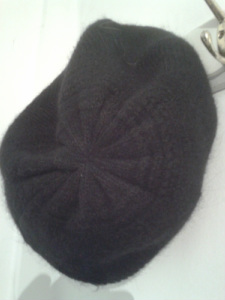
 River, Odense
River, Odense 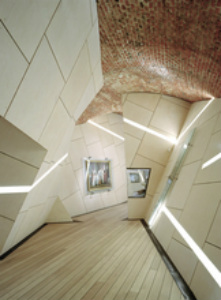 Photo: Bitter + Bredt (Danish Jewish Museum)
Photo: Bitter + Bredt (Danish Jewish Museum) 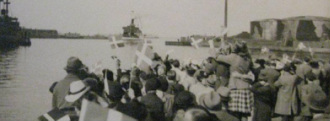
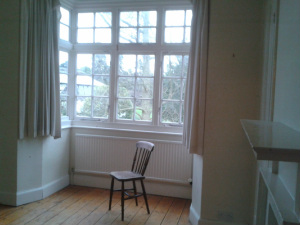
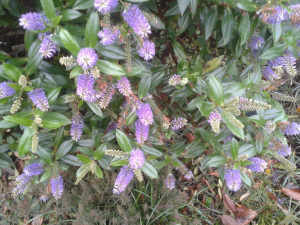

|
|
 The month begins with a flurry of packing and unpacking, most recently arriving back from a weekend in Copenhagen, swapping suitcase for backpack and sleeping bag and heading for three days – and nights! – actual residency in the botanic garden. The taxi driver is interested in my project – it turns out he’s a writer too, with books and books full of his working life. This is how it goes: he works now from five in the morning until early afternoon, then heads home to Ely, to a house overlooking the river which 41 years ago he bought for £7,000. He extended the kitchen and made a roof garden so that he can sit looking out across the water. Sometimes, on a nice day, he walks down to The Cutter for a pint. He prepares the evening meal – his wife doesn’t finish work until later – puts the coffee machine on, has a shower, then settles down for half an hour at his computer with a cup of coffee and writes up his day. ‘It’s a system,’ he says, ‘just a routine.’ He has no plans to publish. ‘A great thing to have done, though,’ I say. ‘But you have to be 72 to have done it,’ he says.  River, Odense River, Odense I’ve been thinking a lot recently about what makes a home. The Copenhagen visit was part of my friend the poet Kaddy Benyon’s research – I was mainly there for the Glögg (which was FANTASTIC!) and in the hope of a look at their botanic garden, including a high-level walk round the dome of the main glasshouse, but we ran out of time. I went with almost no knowledge of Copenhagen and I don’t know if I could make my home there. It was fearsomely cold (the hat was an essential purchase), even though the map tells me we were only about as far north as Leeds, but it did seem a remarkably good-humoured city, and I liked the candles everywhere, even at breakfast. We were following in the footsteps of Hans Christian Andersen, a strange solitary with a strangely yearning expression if the ubiquitous portraits are anything to go by. A child who never quite grew up, Kaddy says. We visited various versions of his early home, all basically a single room, up in the attic or squeezed in between others housing entire families in the one space, without running water. His mother took in washing - in Odense, this meant a walk down to the river. As a child he slept across the foot of his parents’ narrow bed, beside the work bench of his cobbler father. Despite the cramped conditions, family poverty, his mother’s alcoholism and his father’s death when he was eleven, he seems to have claimed a happy childhood.  Photo: Bitter + Bredt (Danish Jewish Museum) Photo: Bitter + Bredt (Danish Jewish Museum) A quite different version of home is represented in Copenhagen’s Jewish museum. Contained within the seventeenth century Royal Boat House, the extraordinary interior, designed by world-renowned architect Daniel Libeskind, is both beautiful and disorienting, with floors that slope unexpectedly and display cases curved and angled so that you have to squint and peer. I remember five sections – ‘rituals and traditions’ I think was one, ‘arrivals’ may have been another – representing the history of Jewish people in Denmark, but found the lack of a clear sequence disturbing – ‘it’s not in any particular order, you can start anywhere’ the smiling young man explained – and thus ultimately unsatisfying. The design was apparently based on the concept of Mitzvah, the good deed, symbolising the rescue of Danish Jews in 1943 and of peaceful coexistence in Denmark.  In a hall next to the permanent colllection, a special exhibition actually entitled ‘Home’, focussed on the experience of Jewish people returning to Denmark after the war. Their protected status within Nazi-occupied Denmark had ended suddenly in 1943 and thousands had taken the ‘white bus’ to safety in Sweden but for many coming back was fraught with danger and dislocation: family homes had been rented out or sold, families divided. I stood in front of a video of three small children playing together in a garden. ‘That’s my sister,’ the man next to me said. He was from Jutland. The two girls in the film were both his sisters – one was there with him – and the boy was a Jewish boy they looked after when his parents fled without him, convinced that the escape might be more hazardous than remaining. After he was reunited with his mother, she was never able to talk to him about her experiences or the separation. I am reading Sebald’s ‘The Emigrants’. The subjects of the first two of the four sections, both men, committed suicide. The first was troubled before death by a returning memory of the ‘exodus’ from a town in Lithuania with other emigrants, bound supposedly for America but ending up in London. The reason behind the uprooting is only implied; what seems significant is the feeling of homesickness. The second narrative begins with the death of an old teacher, Paul and moves from the writer’s memories of his classes to unravel the teacher’s past. Paul and his family suffered repeated obstacles and losses on account of their Jewish heritage; even so, Paul still regarded himself as German and Germany as his home.  Of course my current itinerant state is of quite a different order, although being on the move, even by choice, does give some sense of its opposite, of how crucial a sense of rootedness and belonging is to our well-being. My hat at the moment is hanging on a peg by the back door of the Superintendent’s House, generously loaned to me by the botanic garden for a few days while it awaits refurbishment. My original request to be allowed to camp out in the garden itself (what was I thinking? at this time of year?!) was fortunately turned down, and I find myself in rather grand surroundings, and beautifully warm. I wander through empty rooms, getting used to the sound of my footsteps on the varnished boards and carpets gritty with old leaves and dust. The silence is mesmerising. I have very few things with me and I am loving the sense of living simply, without clutter, Even so, and even though my stay here is short, already I am thinking of candles, and soap, a jug for coffee, a jar for flowers. I find myself seduced by the house itself, too, wondering about the lives lived here during its 130-year history. The third morning, I sit at an upstairs window to watch the sun rise. The sun itself is partly obscured by treetops; there is only a fleeting impression of molten gold. Above the sun, folds and scallops of cloud roll and glide, their hollows grey-mauve, their edges blazing ‘flamingo pink’ (the description, which is Sebald’s, fits perfectly) and the house fills with a smouldering light. It’s short-lived: already there are downward straights of sullen grey, like bunches of steel rods, that I think mean rain. Already the fiery glow in these rooms has vanished. There’s a faint duck-egg blue above the remains of the lit cloud which shrinks and fades to a delicate salmon, silvery greys with a hint of lavender. Flurries of birch leaves are whisked by the window then drift vertically down when the wind drops. Three ducks wheel across my view and up out of sight. Where there was sunrise, only a few water-colour streaks, flesh pink, violet grey, remain. And then gone.  A little later, I head out for a march round the perimeter, moving quickly partly to assuage my growing anxiety about time passing and little achieved, partly because of the cold. OK, not Copenhagen cold, but cold enough for seasoned gardeners Paul and Brendan to comment on as I pass. A wonderfully brisk late autumn day (or is it winter now?), leaves blown in spurts across my path and executing their complex whirls and turns across the damp grass. A rash of scarlet in the piles by the path catches my eye – an Acer of some kind? O memory of the Flowering Plant Families course, where are you when I need you? In the winter garden, the Hebe Fragrant Jewel is prettily in flower, though without any scent that I can detect, and the stems of the Cornus sanguinea (is it?) glow ruby-red. They remind me of those flexible sticks of red liquorice we called ‘Spanish’ when we were children. I march on, surprising a flock of pigeons, and come upon a pair of magpies discreetly picking over the ground by the main gates, keeping their good luck to themselves. That strange fruit the osage orange (Maclura Pomifera, also known as horse apple and monkey ball) lines the path about here. A little further, on the edge of the woodland garden, much smaller but still large enough to make me stumble, a littering of the conkers from the bottlebrush buckeye (I have to remind myself of the name) bursting treacle-brown and rather creased from their smooth shells.  At the end of the week, I’m bound for north-east Cumbria and the house that became our home for 15 years. At the time it was all we could afford, its many disadvantages (low doorways and ceilings, few windows, a garden across a muddy track) offset by its cheapness and by its cocoon-like quality, a perfect little hole for the sore and exhausted to crawl into and lick their wounds. It didn’t in fact keep us entirely safe but it holds some small perfections: the view of the fell on a sunny autumn morning, the winter days we camped out in front of a blazing fire when storm and flood left us without light, heating or hot water. Oddments of memory – the shed skin of a grass snake curled on the piano – seem precious now. Somehow we never had our own keys; the front door key (the only key to the only door, in fact) lived in the coach lamp in the porch. All our friends and neighbours knew that was the way in. My last email from my departing tenant finished ‘I’m not sure when you’re arriving, so I’ll leave the key in the light.’ Perhaps it’s that sense of the known, and being known, that explains the pull of home, however meagre.
2 Comments
Jan Hurst
11/12/2013 05:21:18 am
Maybe home is wherever the people you care about live?
Reply
10/2/2018 01:34:46 am
Hi Kate! I hope you have a good day always. I would just like to share that I do love to write books as well and as a matter of fact, I just recently started to work on a project. I would really like to know from you guys some fresh and new ideas on how to have a good written book. I am only a beginner and of course, I am still searching for some helpful inputs on how to be successful in this field. But for me, successful or not, it doesn't really matter because what is really important now is that I am happy with what I am doing.
Reply
Leave a Reply. |
At HomeAs Writer in Residence, thoughts from the garden Archives
October 2020
Categories |